5 Wildlife-Friendly Native Shrubs To Plant
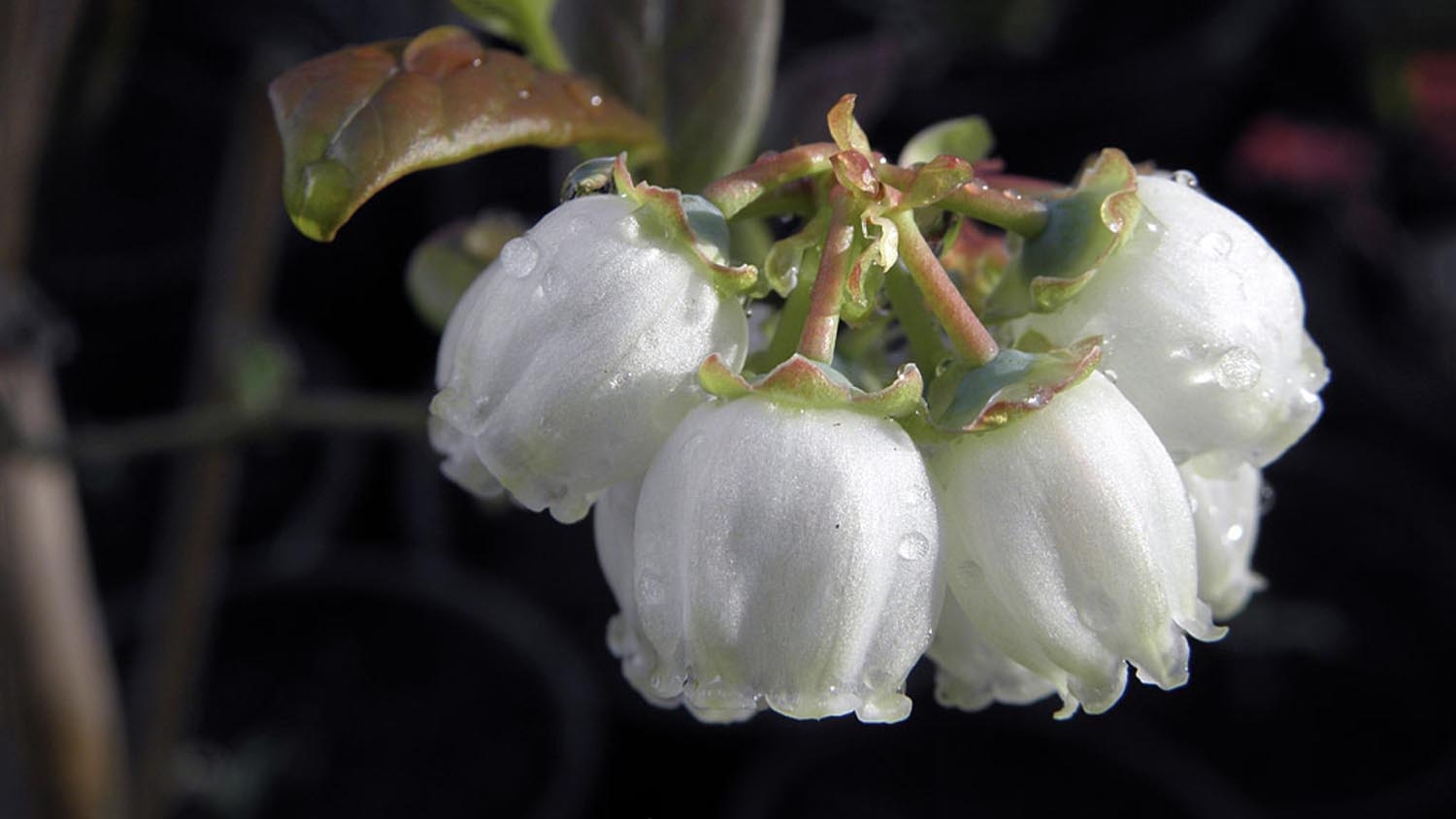
There’s no shrub-stitute for native plants to make your home landscape more welcoming to wildlife. Native shrubs can provide a place for bees, butterflies, birds and other wildlife to rest and refuel, says Charlotte Glen, native plants expert and program manager for the NC State Extension Master GardenerSM program.
Many native plants also add a splash of color or an interesting texture to your landscape.
“Within native shrubs, you have some varieties with great ornamental attributes, that as well as supporting wildlife, are just good functional landscape plants,” Glen says. Because native shrubs are well-adapted to North Carolina’s climate, they typically thrive when planted in the right site.
Picking out a new native shrub for your yard is a fitting way to celebrate National Native Plant Month in April. To help you get started, Glen has created a list of five wildlife-friendly native shrubs to choose from.
One word of advice: Keep a close eye on shrubs planted in the spring or summer to ensure they get enough water through their first growing season to become established.
Browse this list of native shrubs for inspiration.
Spicebush
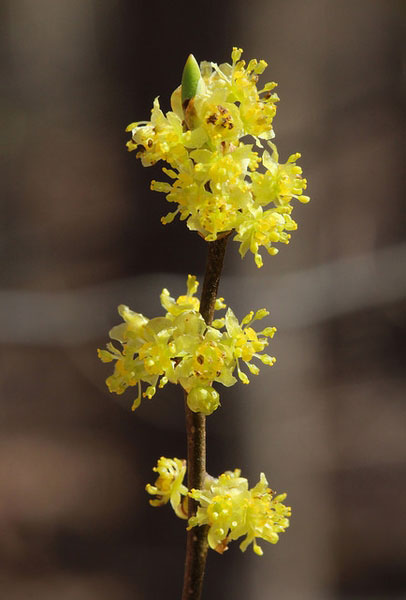
Spicebush (Lindera benzoin)
The spicebush gets its name from its aromatic properties. Glen says if you scratch the stems, they give off a wintergreen smell.
Pollinators are drawn to the spicebush because it flowers early in spring, when few other plants are in bloom. It is also a larval host plant for two species of swallowtail butterflies.
Spicebush will produce red fruit in late summer that wildlife enjoy, provided that you have a few of the plants in the vicinity.
“This is one of those species that has separate male and female plants,” Glen explains. “You get the berries on the female plants, but you need some male plants nearby to pollinate.”
Spicebush foliage turns a bright yellow later in autumn.
What to know about spicebush:
- Works best in landscapes with space and moist soil
- Produces early spring flowers for pollinators
- Supports swallowtail butterflies
- Bears red fruit in late summer
- Adds a pop of color with yellow fall leaves
- Has a low flammability rating and is a good choice for fire resistant landscaping
“Spicebush blooms very early in the spring before the leaves come out. It has yellow flowers that are small but cover the stems. It’s subtle but pretty at the same time. So you get pollinators visiting it, and then you get the berries, which ripen in August and September, that are an important food source for migrating songbirds.” — Charlotte Glen
Serviceberry
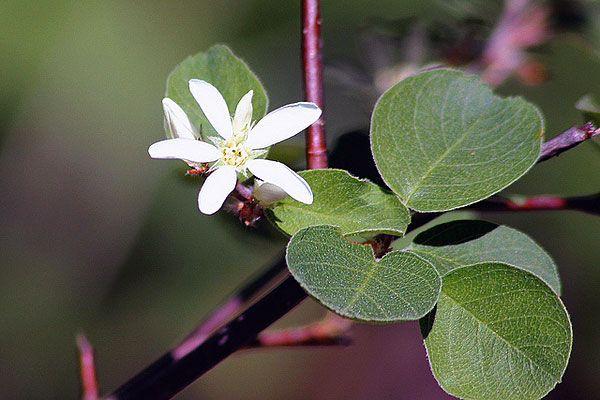
Serviceberry (Genus: Amelanchier)
Befitting its name, serviceberry is eager to make itself useful in your landscape. Serviceberry species come in multiple sizes to fit your needs, from treelike A. arborea to shrubby A. spicata, Glen says.
As one of the earliest native plants to bloom, serviceberry produces white flowers that attract pollinators, though North Carolina’s state flower often eclipses it.
“I think one of the reasons serviceberry hasn’t gotten quite the attention it could have is because it tends to bloom at a similar time to dogwood trees, and dogwood trees are so spectacular,” Glen says.
In late spring, serviceberry makes a splash with edible berries that are among the first native fruits to ripen, and are favorites with birds, she adds. “The minute the berries are ripe, the birds swoop in and get them.”
The serviceberry’s foliage turns yellow, orange and burgundy in autumn.
What to know about serviceberry
- Looks best in an open, natural home landscape setting
- Has some of the earliest flowers for pollinators
- Attracts native bees
- Provides food for caterpillars
- Produces fruit that’s irresistible to birds
- Gives landscapes a splash of yellow, orange or burgundy fall color
“The serviceberry itself is edible for humans. It’s an interesting taste, often described as a cross between a cherry and a blueberry. You can get notes of both. Some people don’t like the sensation of eating it and feeling the seeds. But honestly, often you don’t get any of the fruits because the birds absolutely love them.” — Charlotte Glen
Rabbiteye blueberry
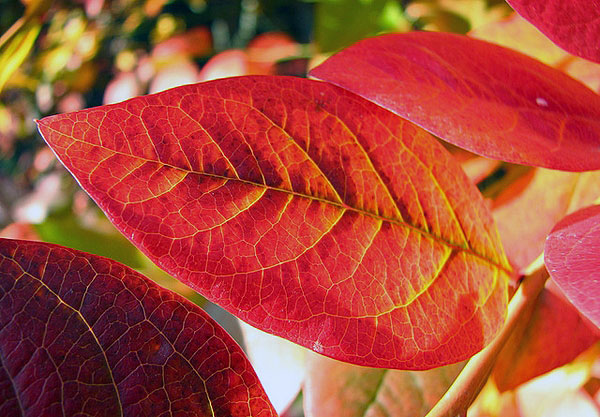
Rabbiteye blueberry (Vaccinium corymbosum, formerly Vaccinium virgatum)
Interested in a shrub that beautifies your yard and supports native pollinators? Consider planting a native rabbiteye blueberry bush.
“We have a native bee called the Southeast blueberry bee, which specializes in blueberries and other early spring blooming natives,” Glen says. “If you have a blueberry bush, you may have native blueberry bee nests near you. They’re a type of bee that lives in the ground, and only forages within a couple of miles of where their nest is. Their life cycle revolves around the time when blueberries flower.”
Another reason to plant a rabbiteye blueberry is its spectacular foliage in late fall.
“Often it’s not until Thanksgiving that they reach the peak in their fall color,” Glen says. “You can have beautiful reds, sometimes a darker burgundy, sometimes a more brilliant orange, and that foliage and color can hang on into December. I think if it wasn’t so popular as a fruit production plant, it would have its place as a landscape plant.”
If you plant a rabbiteye blueberry, expect to share most or all of the fruit with your animal neighbors. “A lot of the fruits do get eaten by birds. There are also some interesting caterpillars that’ll feed on the foliage and then provide food for birds as well.”
As long as they’re planted in acidic soil, native blueberries can adapt to a variety of landscape conditions, needing only an occasional pruning, Glen says. There are varieties adapted to each region of our state – mountains, Piedmont and coastal plain. Your county Extension center can help you do a soil test and determine which varieties will grow best in your area.
What to know about the rabbiteye blueberry
- Requires acidic soils–test your soil before planting
- Needs little maintenance except occasional pruning
- Serves sharp-eyed birds first – if you only have a few bushes, don’t expect to have many blueberries left
- Provides sumptuous late fall color, peaking around Thanksgiving
“Most of the blueberry varieties that grow well in home landscapes are in a group called rabbiteye because their berries start off pink, like rabbits with pink eyes, and then turn blue.” — Charlotte Glen
Beautyberry
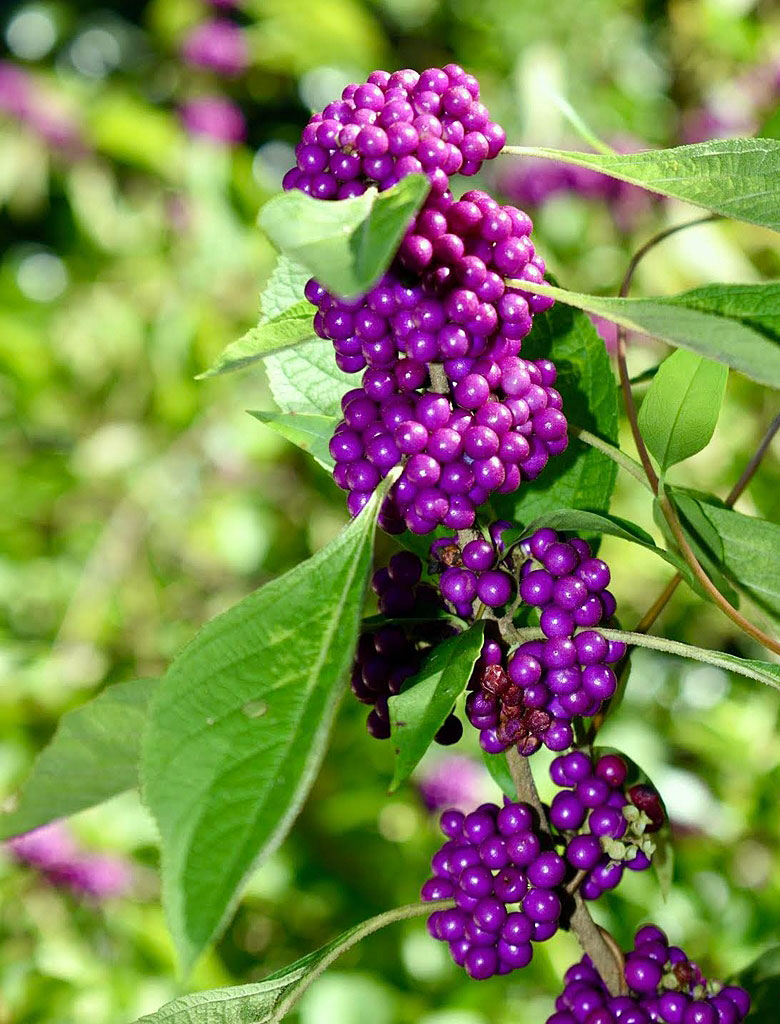
Beautyberry (Callicarpa americana)
The stunning beautyberry lives up to its name, bearing magenta fruit.
“I don’t know of any other plant in nature, especially in the Southeast, that has fruits in this color,” Glen says.
Clusters of beautyberry fruits are borne along the stems in early fall, attracting songbirds, which gobble them up. The plant’s less showy flowers, which appear before the fruits, also play an important role: attracting small native bees.
“Bees in general kind of match to flower size,” Glen says. “You tend to see smaller bees visiting the smaller flowers. You’ll see a lot of little sweat bees on the beautyberry flowers. You have to look closely.”
Another feature of the plant is its adaptability. In a sunny spot, the plant has a more compact shape. In shade, the shrub is more open and lanky, Glen says. For best results, the beautyberry needs an annual pruning.
“In late winter — February or March — cut the whole thing back to about two feet tall, so that it pushes out the strong new growth. You’ll get more flowers and fruits with more new growth.”
What to know about the beautyberry
- Attracts native bees
- Produces clusters of magenta fruit
- Adapts to sunny or partially shaded spots
- Looks best with an annual pruning in late winter
“The beautyberry’s scientific name is Callicarpa and is an apt descriptor for this native shrub: ‘Calli’ means beautiful and ‘carpa’ means fruit.” — Charlotte Glen
Possumhaw Viburnum
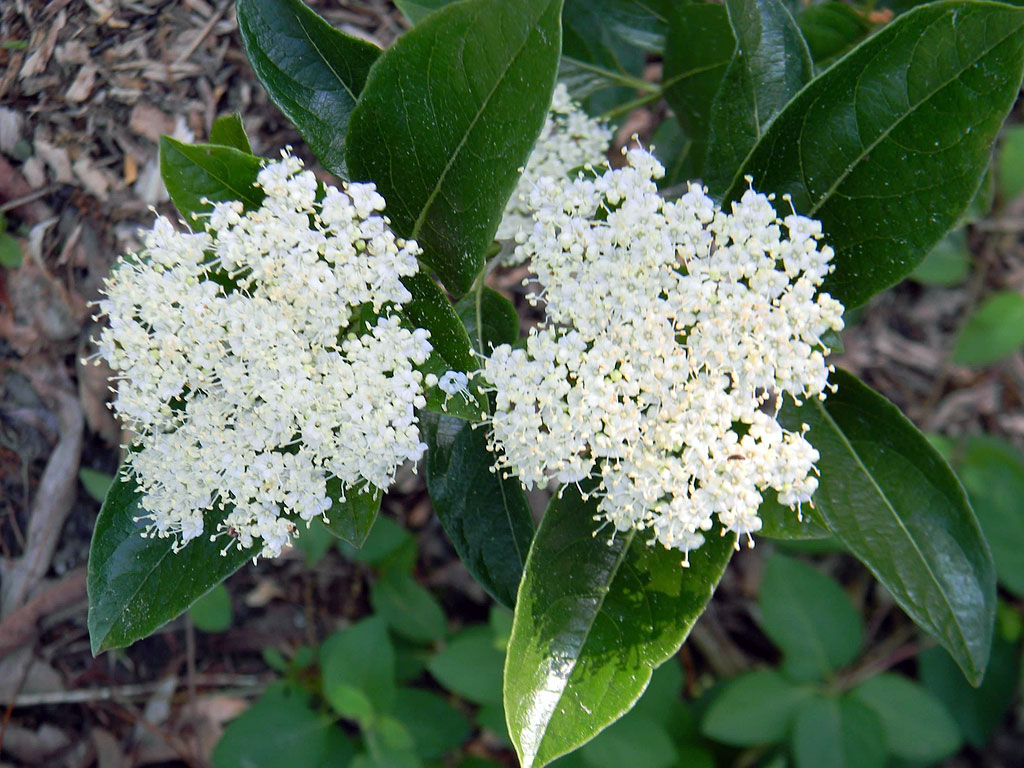
Possumhaw Viburnum (Viburnum nudum)
If you’re looking for a color-changing native shrub, Glen recommends the Possumhaw Viburnum, which is native to North Carolina.
In spring, it produces white blooms that attract butterflies and moths. In autumn, it’s dramatic.
“In the fall it has clusters of berries, and they really give you a wonderful show. Initially they’re green, and then they turn pink, and then they turn blue, and then they end up a darker kind of purplish blue. You get this kaleidoscope of color change over the season.“
In late fall, Possumhaw Viburnum leaves turn red and wine-colored hues.
“From Thanksgiving into December, it can look very attractive with the fall color and any remaining fruit. The contrast of the blue to purplish fruits with the burgundy leaves can be quite striking.”
A number of bird species savor the fruits.
Possumhaw Viburnum is adaptable but prefers sunny locations with acidic soils that are moist but well-drained.
What to know about the Possumhaw Viburnum
- Suitable for butterfly, native, pollinator, rain or wetland gardens
- Likes sunny spots with moist, well-drained acidic soils
- Grows up to 12 feet tall and wide
- Produces fruit for birds
- Has wavy-edged leaves that provide texture
“There’s plenty of opportunity to add shrubs to the landscape, beyond the foundation of your house. Consider having some natural areas or beds that include trees and shrubs further out from your home. Think a little bit beyond a cookie-cutter approach.” — Charlotte Glen
- Categories: